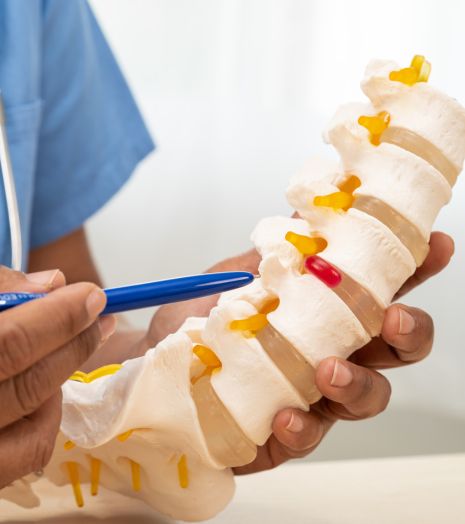Neuromodulation (Spinal Cord Stimulation)
What is Neuromodulation?
Neuromodulation therapy is a type of pain management technique that involves the use of electrical or chemical signals to modulate or alter the activity of the nervous system in order to alleviate chronic pain.
The therapy works by targeting specific nerves or areas of the brain that are involved in the perception and processing of pain signals. By modulating the activity of these nerves or areas, neuromodulation therapy can help reduce the intensity of pain signals, increase the body’s natural pain-relieving mechanisms, and improve overall pain control.
It may be used to treat conditions such as failed back surgery syndrome, complex regional pain syndrome, and neuropathic pain.


Neuromodulation therapies that are commonly used in pain management include:
Spinal cord stimulation (SCS): A spinal cord stimulator is a medical device that is surgically implanted under the skin of the back to treat chronic pain. It works by sending electrical impulses to the spinal cord, which can interrupt or block the pain signals that travel from the nerves to the brain.
The device consists of a small pulse generator and thin wires (leads). This generator produces a mild electrical current that travels through the leads and stimulates the nerves in the spinal cord. The patient can adjust the level of stimulation using a handheld remote control.
Peripheral nerve stimulation (PNS): Similar to SCS, but the electrical impulses are sent to nerves outside of the spinal cord, such as those in the limbs.
Is it the right procedure for you?
There are several steps in determining if you are a good candidate for Spinal Cord Stimulation (SCS).
Here is an overview of what you can expect:

Consultation

Trial implantation

Evaluation

Permanent implantation

Post-implantation follow-up
4 key points for Neuromodulation
Mechanism of Action
Neuromodulation alters nerve activity by delivering electrical or pharmaceutical agents directly to a target area.
This helps regulate abnormal signals in the nervous system, offering relief from chronic pain and other neurological conditions.
Indications
Neuromodulation is commonly used for conditions such as chronic pain, movement disorders (like Parkinson’s disease), epilepsy, and urinary incontinence.
It is typically considered when other treatments have proven ineffective.
Procedure
Most neuromodulation procedures are minimally invasive and performed on an outpatient basis.
A device is implanted under the skin and connected to electrodes that deliver targeted stimulation to specific nerves or areas of the spine.
Benefits and Risks
Benefits include significant pain relief, improved quality of life, and reduced reliance on medications.
Risks may include infection, device malfunction, or lack of symptom improvement.
